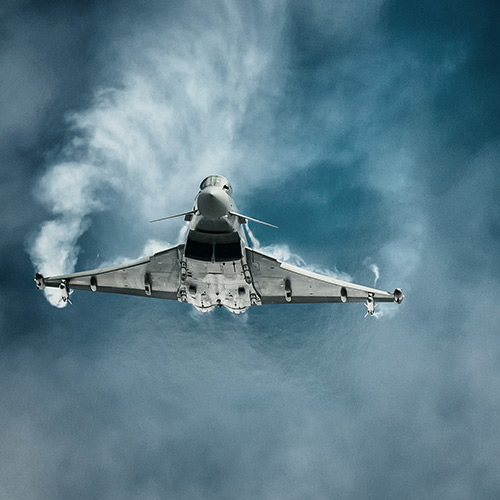MST (MAINTENANCE SYSTEM TRAINER): DEVELOPMENT OF A TRAINING SYSTEM FOR THE INSTRUCTION OF TECHNICAL EUROFIGHTER STAFF
Airbus Defence & Space were commissioned by the German Federal Office for Army Equipment, Information Technology and Exploitation (BAAINBw) to supply a new Maintenance System Trainer (MST) for instructing the technical Eurofighter staff in the German Air Force. The MST simulates the on-board systems of the Eurofighter for ground staff.
MST (MAINTENANCE SYSTEM TRAINER): DEVELOPMENT OF A TRAINING SYSTEM FOR THE INSTRUCTION OF TECHNICAL EUROFIGHTER STAFF
Airbus Defence & Space were commissioned by the German Federal Office for Army Equipment, Information Technology and Exploitation (BAAINBw) to supply a new Maintenance System Trainer (MST) for instructing the technical Eurofighter staff in the German Air Force. The MST simulates the on-board systems of the Eurofighter for ground staff.
What is unique is that the scope of the simulation allows not only standard maintenance and repair workflows, but also complex system knowledge, such as the correct procedure for error detection, search, correction and test execution, to be taught realistically and efficiently. Further development of the German Air Force’s existing training system enabled us to ensure that training for our customer Airbus Defence & Space was to the current aircraft standard.
In specific terms, our experts developed the landing gear subsystem in partnership with the customer. From the initial requirements analysis of the subsystems to the integration of the utility control system (including data display and fault diagnosis system) into an “e-blended learning” platform, EDAG aeromotive’s team of experts provided our customer with full support in the MST project. In addition to determining the software requirements, a very detailed analysis of the Eurofighter’s system documentation was necessary, during which our team successfully implemented special troubleshooting and maintenance instructions. Meeting the subsystem requirements called for the coordination of interfaces with other software components (e.g. hydraulic model, 3D graphics, 2D overview diagrams of the subsystems, implementation of landing gear and front computer software). Implementation was carried out by our experts, using an existing in-house development framework and an existing model of all of the aircraft’s electrical connections.
Due to the fact that special development tools were used, our team took over the definition and performance of module tests. Using system integration and testing with 3D graphics and 2D overview diagrams for the subsystems, our employees completed the project to the customer’s complete satisfaction.


What is unique is that the scope of the simulation allows not only standard maintenance and repair workflows, but also complex system knowledge, such as the correct procedure for error detection, search, correction and test execution, to be taught realistically and efficiently. Further development of the German Air Force’s existing training system enabled us to ensure that training for our customer Airbus Defence & Space was to the current aircraft standard.
In specific terms, our experts developed the landing gear subsystem in partnership with the customer. From the initial requirements analysis of the subsystems to the integration of the utility control system (including data display and fault diagnosis system) into an “e-blended learning” platform, EDAG aeromotive’s team of experts provided our customer with full support in the MST project. In addition to determining the software requirements, a very detailed analysis of the Eurofighter’s system documentation was necessary, during which our team successfully implemented special troubleshooting and maintenance instructions. Meeting the subsystem requirements called for the coordination of interfaces with other software components (e.g. hydraulic model, 3D graphics, 2D overview diagrams of the subsystems, implementation of landing gear and front computer software). Implementation was carried out by our experts, using an existing in-house development framework and an existing model of all of the aircraft’s electrical connections.
Due to the fact that special development tools were used, our team took over the definition and performance of module tests. Using system integration and testing with 3D graphics and 2D overview diagrams for the subsystems, our employees completed the project to the customer’s complete satisfaction.



